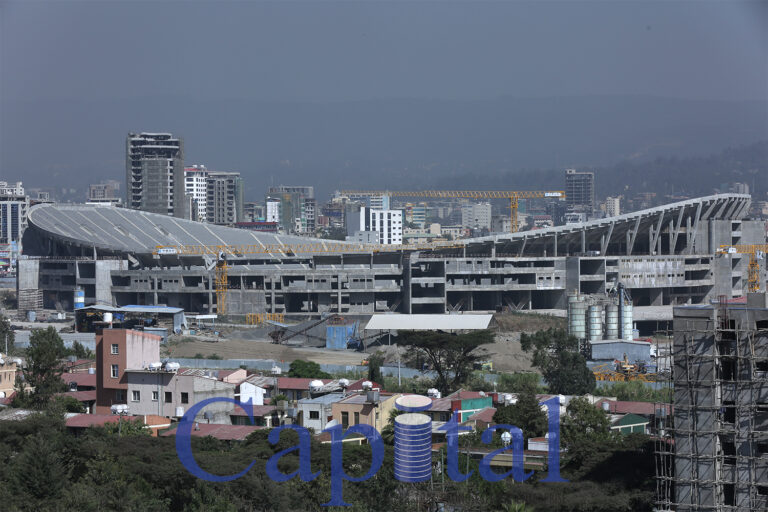‘I like to think of “Medemer” as a social compact for Ethiopians to build a just, egalitarian, democratic, and humane society by pulling together our resources for our collective survival and prosperity. …Medemer resonates with the proverb, “I am my brother’s keeper. I am my sister’s keeper.” Prime Minster Dr Abiy Ahmed, Nobel Lecture, Oslo, 10th December 2019.
By Getachew Beshahwred
Ethiopia’s economy, measured by Gross Domestic Product, has been growing at a significant rate over the last two decades. In fact, by some measures, it has been the fastest-growing economy in Africa and, if not the fastest, but surely one of the fastest in the world. According to the National Bank of Ethiopia, in the Fiscal Year ending in July 2020, Ethiopia’s economic growth will accelerate to 10.8% which is much higher than the 9% achieved in the previous year. This could make Ethiopia’s economy, measured by GDP, the fastest growing in the world. According to the annual report of the National Bank, “the proper implementation of the recently launched Home Grown Economic Reform Program is expected to contribute towards developing a modern, vibrant, competitive and sound financial system.’
This is an excellent achievement and good news for Ethiopia. The loan from the World Bank and the IMF could help accelerate this growth as long as the loan is properly targeted and used. If not, much of the gain in economic output could be dwarfed by the huge national debt. In 2018 Ethiopia’s Debt to GDP ratio was 61.8. Compared to Japan’s (238), Italy’s (134), USA’s (106.1), United Kingdom’s (80.8), Egypt’s (90.50), Angola’s (80.5), and Tunisia’s (71.40), Ethiopia’s Debt to GDP ratio is modest. However, in 2019/20 it is expected to significantly increase, not least partly because of the recent huge loans from the IMF and the World Bank. The issue is not the quantity of the loan but its quality and the ability of the country to repay the loan and the related interest. The loan should be used for investment in export-oriented sectors with significant returns in the short and the medium term. Huge infrastructure projects with huge and long-term and sometimes unrealistic benefit-projections should be avoided. Many developing countries have used IMF and World Bank loans towards huge infrastructure projects with no significant return in the short -medium term, and unrealised long-term economic gains. The result was the need for more loans and reduction in money available for public services like health and education, and also loss of sovereignty in economic and political management, due to loan conditions and requirements.
In any case, an increase in GDP does not measure the true economic wellbeing of a country and its people. As one put it, ‘You could destroy a city and rebuild it, and the GDP would grow as a result’
Yes, GDP is a very good economic indicator. Most advanced economies have high GDP and high GDP per capita which is a measure of a country’s economic output (GDP divided by the number of its total population). According to the International Monetary fund, Ethiopia’s GDP per capita in 2019 was $953, USA’s ($65,111), UK’s ($41,030), Japan’s ($40,846), Italy’s ($32,946) and Egypt’s ($3,040). According to the IMF, Ethiopia’s GDP per Capita is expected to stand at $1,411.77 in June 2024. By both measures Ethiopia sits near the bottom of the economic league Table, and it will take years even to move, if at all, to a near mid-tier level.
However, the high GDP and GDP per capita in the developed countries hides the huge economic disparity between the rich and the poor, and the gap is widening. GDP per capital suffers from the law of averages. For instance, in a country with a population of 2, if Mr. A and Mr. B earn £100 and £0 respectively, the average income for both is £50. In the next year, if Mr. A’s income increased to £150 but Mr. B’s remained the same, the law of averages dictates that the average income for both is now £75 and it has increased by 50% from the previous year’s level, despite the fact that Mr. B did not get any income and he could be in a shelter or sleeping rough on the streets or dead by the end of the year, unless Mr. A has thrown him some crumbs from his table. Hence, it is important for a government to ensure that all of its people are benefiting from the economic wealth of the country, and not rely just on GDP and GDP per Capita to justify its economic policy.
In 2011, the UN General Assembly adopted resolution 65/309, Happiness: Towards a Holistic Definition of Development. It then invited countries to measure happiness of their people and to use the result in public policy development. The happiness measures include: GDP per capita, social support, healthy life expectancy, freedom to make life choices, generosity and perception of corruption.
Some would argue that Trickle Down Economics is the solution. Trickle Down Economics is the economic proposition that if you reduce tax rates for the rich and big businesses it will lead to higher economic output i.e. higher GDP and higher GDP per capita. In the first place this is not true. Big businesses and rich people do not spend all the money they earn. For instance, in 2019 Apple was reported to have a Cash Reserve of $245 billion. By some estimates rich, working class people and poor people spend 30%, 98% and 100% of their income respectively. It is absolutely important that poor and working-class people have money in their pockets to spend because that is the best way to drive an economy forward.
Most importantly if we believe in the proverb, I am my brother’s keeper. I am my sister’s keeper”, we should work towards an equitable distribution of wealth. All people, all sectors and sections of society should benefit from the economic growth of a country. They should be able to get an adequate income to live on and proper and safe working conditions. We do not want a sweatshop economy, and like so many developing countries we should not expose our people for a ‘Slave economy’ and our children for exploitation. We should not expect big businesses and rich people to act out of the goodness of their hearts, because they would not. Of course, there are be some exceptions. Trickle Down Economics is like waiting for crumbs from a rich man’s table that would never come. Trickle Down Economics does not work.
Big business helped by clever accountants and tax advisors are excellent at avoiding taxes. International companies with operations all over the world are clever at declaring their income at low tax jurisdictions. For instance, in the United Kingdom, in 2018, Amazon made £2.3 billion in sales but paid only £14 million in taxes, and Google paid a tax of £65 million on Sales of £1.4 billion. All this done with in the law.
Ethiopia should not hugely rely on tax income from International companies who may come to Ethiopia. Any current tax income, especially corporation tax, from the soon to be privatised companies could be lost for good. If profitable companies like the Ethiopian Airlines are privatised, not only the profit but also the corporate tax income from them could be lost for the government. By the way, there is no economic or any other sound justification to privatise, in any format, the hugely successful Ethiopian Airlines.
In any case partly for economic growth and mainly to look after their people, many governments have introduced minimum wages and working conditions. There are some who would argue that this would deter foreign investors. However, who would want a foreign investor who is not willing to pay a decent minimum wage and observe minimum standards of working conditions and health and safety regulations. Many countries including Afghanistan, Albania, Algeria, Angola, Benin and Cameroon have legislated for and introduced minimum wage.
The United Kingdom has a strict rule on working conditions, and health and safety regulations. It also introduced a minimum wage in 1999. At the time of its introduction by a Labour government, the Conservatives opposed it arguing that it could have huge negative impact on employment. In fact, it did not, and successive Tory governments increased the minimum wage. Since its introduction it has raised pay for the lowest paid without damaging employment and it has become an established part of the UK labour market. The minimum wage should be set at a reasonable level. In the UK a voluntary minimum living wage was adopted by many employers. Recently, the National Minimum Wage has been rebranded as the National Living Wage. Though the change is cosmetic, it signifies the government’s expectation for employers to pay not just a Minimum Wage but a Living Wage, and the minimum level shall be set by the government.
Ethiopia should also soon legislate for a Minimum Living Wage and significantly improve its laws on working conditions and health and safety regulations. It is only apparent that the gap between the rich and the poor in Ethiopia has significantly widened and a significant proportion of our people, including many in employment, live in poverty. To improve the living conditions of our people would require much more than the setting of a minimum wage. It is, however, a just beginning and a first step. Employers and shareholders should be reminded that we, as a country and people, sink or swim together. Inequality is not only an injustice but is also the cause of many social problems. A happy employee is a productive employee. A hungry employee is an angry employee.
The case of Chenkol Menberu who, after graduating in Civil Engineering from Bahir Dar University went back to his old job of cleaning shoes after the only job he could get was paying him only 29 birr a day, is wake up call. Many of Ethiopia’s big businesses are reporting huge profits and huge returns to their shareholders. Surely, they can afford to pay their employees decent wages. The right for a decent minimum wage, and proper, adequate, healthy and safe working practices and conditions should be enshrined in law. Otherwise the proverb, ‘I am my brother’s keeper. I am my sister’s keeper’ would be like many other good proverbs and remain just a proverb.
Getachew Beshahwred BA (Dist.), MBA, BFP, FCA, Cert CII, PMP is the Managing Director of GB & Co Ltd, Chartered Accountants and Management Consultants, London. Getachew can be contacted at getachew@gbandco.co. GB and Co, in association with the Chartered Insurance Institute, London and the London Institute of Banking and Finance provides Executive Training for Insurance and Banking personnel from Ethiopia. The training is done either in London or Addis Ababa. Contact Getachew for further details.




